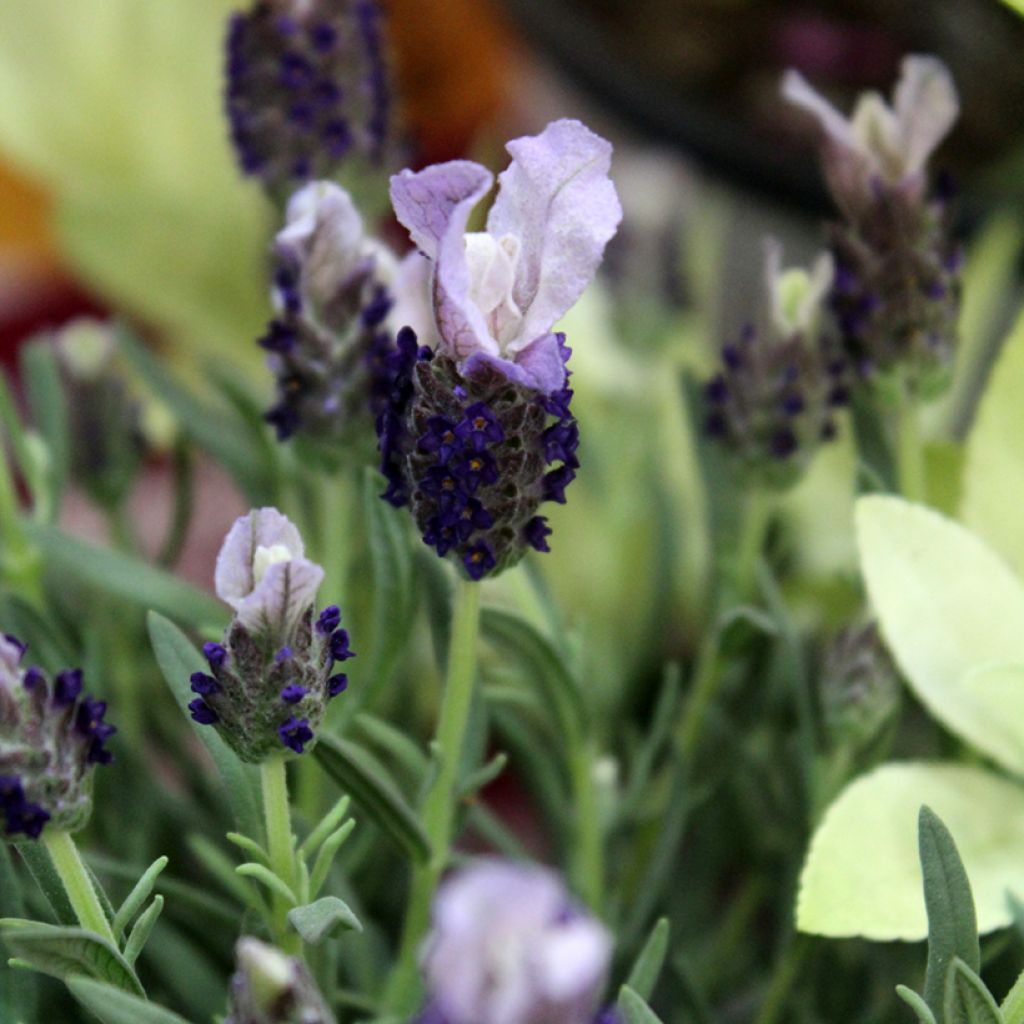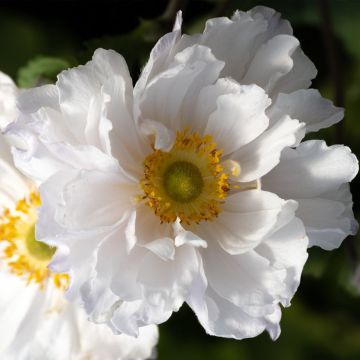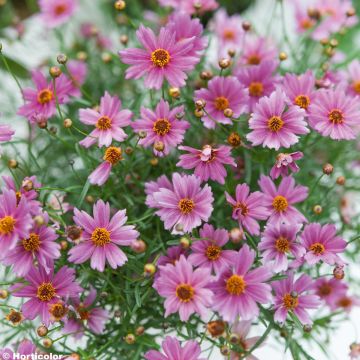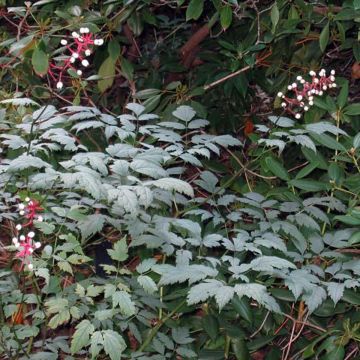

Lavandula stoechas Madrid Purple - French Lavender


Lavandula stoechas Madrid Purple - French Lavender
Lavandula stoechas Madrid Purple - French Lavender
Lavandula stoechas Madrid Purple
French Lavender, Spanish Lavender, Butterfly Lavender
Special offer!
Receive a €20 voucher for any order over €90 (excluding delivery costs, credit notes, and plastic-free options)!
1- Add your favorite plants to your cart.
2- Once you have reached €90, confirm your order (you can even choose the delivery date!).
3- As soon as your order is shipped, you will receive an email containing your voucher code, valid for 3 months (90 days).
Your voucher is unique and can only be used once, for any order with a minimum value of €20, excluding delivery costs.
Can be combined with other current offers, non-divisible and non-refundable.
Why not try an alternative variety in stock?
View all →This plant carries a 12 months recovery warranty
More information
We guarantee the quality of our plants for a full growing cycle, and will replace at our expense any plant that fails to recover under normal climatic and planting conditions.
Would this plant suit my garden?
Set up your Plantfit profile →
Description
The 'Madrid Purple' Butterfly Lavender is a variety of Lavandula stoechas with contrasting flowers. From spring and throughout the summer, it blooms in very dark, purple-violet spikes, carrying light purple bracts resembling butterfly wings. It forms a small, dense, rounded shrub, covered with narrow, aromatic leaves that smell like pine. This moderately hardy plant prefers dry, slightly acidic, and very well-drained soils, and a sunny exposure.
The butterfly lavender, Lavandula stoechas, is a plant native to the western Mediterranean basin. It is a shrub with evergreen leaves that blooms in spring on siliceous hillsides. Belonging to the Lamiaceae family, this plant is aromatic but less used in perfumery due to its camphor content. The 'Madrid Purple' variety forms a compact shrub, with dense vegetation, reaching 60 cm in height and 60 cm in width. It is hardy down to -12°C once mature and under good growing conditions. Its quadrangular stems bear narrow, fuzzy, grey-green leaves with curled edges, emitting a pine scent. In spring, at the tip of each stem, a dense, short-stalked, thick, square-shaped spike forms, carrying tiny flowers. This spike is crowned with several large petal-like bracts, resembling butterfly wings. It is highly visited by pollinating insects, especially bees. It is a nectariferous and melliferous plant.
Unlike most other lavenders, the butterfly lavender should be planted in a low-limestone soil. Additionally, it requires protection from frost, especially when young. It thrives in full sun, in a very well-drained, even dry and rocky soil. Under hot, sunny exposure, its silvery foliage becomes particularly striking, and its flowers diffuse an intense fragrance. Ideal as a Mediterranean ornamental plant, it fits well in borders, rockeries, or containers. It can be paired with Yarrows, Gauras, and Delospermas for example. It also adapts well to container cultivation on a terrace or balcony, with the option of bringing it indoors in frost-prone regions.
Properties: Lavender being a highly melliferous plant, it contributes to the preservation of pollinators: the nectar of its flower attracts bees, making it one of the most renowned honeys.
Lavandula stoechas Madrid Purple - French Lavender in pictures




Flowering
Foliage
Plant habit
Botanical data
Lavandula
stoechas
Madrid Purple
Lamiaceae
French Lavender, Spanish Lavender, Butterfly Lavender
Lavandula stoechas Bee Brilliant
Cultivar or hybrid
Other French Lavender
View all →Planting and care
In nature, the Lavandula stoechas always thrives in poor, siliceous, dry, arid environments with perfect drainage. It detests summer watering with hard water, which makes it sick and causes it to disappear, as it is very sensitive to fungal diseases induced by the combination of heat and humidity. Not very resistant to heavy frosts (down to -10°C), it is advisable to grow it in a raised bed, in front of a south or west-facing wall in cooler regions, and in a pot for wintering. It also adapts very well to container cultivation.
In winter, it absolutely requires perfect drainage, and in summer, it must be kept dry. Lavandula stoechas 'Madrid Purple' will age better in poor soil, as its growth will be slower, and it will be less prone to thinning at the base. To limit this phenomenon, it should be pruned, from a young age, after flowering or in autumn, just above the first buds visible on the wood. Lavenders and lavandins never sprout from old wood. The clump will thus branch out more and more, remaining compact, eventually forming beautiful dense cushions. At planting, provide lavenders with what they like: non-calcareous gravel, coarse sand, but definitely no compost or fertiliser. During pruning after flowering, do not discard the faded inflorescences, but collect them to make sachets that will delicately perfume wardrobes and also act as an excellent moth repellent. For making dried bouquets, it is necessary to harvest just fully open lavender flowers and let them dry in a dry, ventilated place, upside down.
Planting period
Intended location
Care
Planting & care advice
This item has not been reviewed yet - be the first to leave a review about it.
Similar products
Haven't found what you were looking for?
Hardiness is the lowest winter temperature a plant can endure without suffering serious damage or even dying. However, hardiness is affected by location (a sheltered area, such as a patio), protection (winter cover) and soil type (hardiness is improved by well-drained soil).

Photo Sharing Terms & Conditions
In order to encourage gardeners to interact and share their experiences, Promesse de fleurs offers various media enabling content to be uploaded onto its Site - in particular via the ‘Photo sharing’ module.
The User agrees to refrain from:
- Posting any content that is illegal, prejudicial, insulting, racist, inciteful to hatred, revisionist, contrary to public decency, that infringes on privacy or on the privacy rights of third parties, in particular the publicity rights of persons and goods, intellectual property rights, or the right to privacy.
- Submitting content on behalf of a third party;
- Impersonate the identity of a third party and/or publish any personal information about a third party;
In general, the User undertakes to refrain from any unethical behaviour.
All Content (in particular text, comments, files, images, photos, videos, creative works, etc.), which may be subject to property or intellectual property rights, image or other private rights, shall remain the property of the User, subject to the limited rights granted by the terms of the licence granted by Promesse de fleurs as stated below. Users are at liberty to publish or not to publish such Content on the Site, notably via the ‘Photo Sharing’ facility, and accept that this Content shall be made public and freely accessible, notably on the Internet.
Users further acknowledge, undertake to have ,and guarantee that they hold all necessary rights and permissions to publish such material on the Site, in particular with regard to the legislation in force pertaining to any privacy, property, intellectual property, image, or contractual rights, or rights of any other nature. By publishing such Content on the Site, Users acknowledge accepting full liability as publishers of the Content within the meaning of the law, and grant Promesse de fleurs, free of charge, an inclusive, worldwide licence for the said Content for the entire duration of its publication, including all reproduction, representation, up/downloading, displaying, performing, transmission, and storage rights.
Users also grant permission for their name to be linked to the Content and accept that this link may not always be made available.
By engaging in posting material, Users consent to their Content becoming automatically accessible on the Internet, in particular on other sites and/or blogs and/or web pages of the Promesse de fleurs site, including in particular social pages and the Promesse de fleurs catalogue.
Users may secure the removal of entrusted content free of charge by issuing a simple request via our contact form.
The flowering period indicated on our website applies to countries and regions located in USDA zone 8 (France, the United Kingdom, Ireland, the Netherlands, etc.)
It will vary according to where you live:
- In zones 9 to 10 (Italy, Spain, Greece, etc.), flowering will occur about 2 to 4 weeks earlier.
- In zones 6 to 7 (Germany, Poland, Slovenia, and lower mountainous regions), flowering will be delayed by 2 to 3 weeks.
- In zone 5 (Central Europe, Scandinavia), blooming will be delayed by 3 to 5 weeks.
In temperate climates, pruning of spring-flowering shrubs (forsythia, spireas, etc.) should be done just after flowering.
Pruning of summer-flowering shrubs (Indian Lilac, Perovskia, etc.) can be done in winter or spring.
In cold regions as well as with frost-sensitive plants, avoid pruning too early when severe frosts may still occur.
The planting period indicated on our website applies to countries and regions located in USDA zone 8 (France, United Kingdom, Ireland, Netherlands).
It will vary according to where you live:
- In Mediterranean zones (Marseille, Madrid, Milan, etc.), autumn and winter are the best planting periods.
- In continental zones (Strasbourg, Munich, Vienna, etc.), delay planting by 2 to 3 weeks in spring and bring it forward by 2 to 4 weeks in autumn.
- In mountainous regions (the Alps, Pyrenees, Carpathians, etc.), it is best to plant in late spring (May-June) or late summer (August-September).
The harvesting period indicated on our website applies to countries and regions in USDA zone 8 (France, England, Ireland, the Netherlands).
In colder areas (Scandinavia, Poland, Austria...) fruit and vegetable harvests are likely to be delayed by 3-4 weeks.
In warmer areas (Italy, Spain, Greece, etc.), harvesting will probably take place earlier, depending on weather conditions.
The sowing periods indicated on our website apply to countries and regions within USDA Zone 8 (France, UK, Ireland, Netherlands).
In colder areas (Scandinavia, Poland, Austria...), delay any outdoor sowing by 3-4 weeks, or sow under glass.
In warmer climes (Italy, Spain, Greece, etc.), bring outdoor sowing forward by a few weeks.






















































